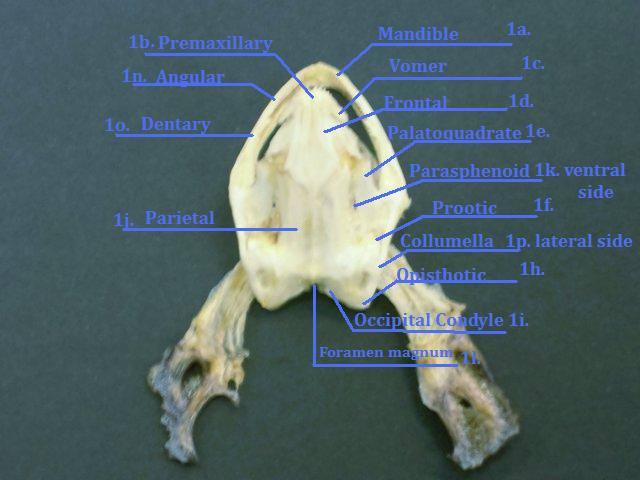
b. Premaxillary- a pair of bones at the tip of the cranium; it is partially tooth bearing
c. Vomer- wedged between the frontal and premaxillary bones, it is partially covered by a cartilaginous process of the chondrocranium
d. Frontal- runs down the center of the skull, directly posterior to the premaxillary
e. Palatoquadrate/Pterygoid- forms the central portion of the lateral margin
f. Prootic- lies lateral to the parietal near the suture of the parietals and frontals; partially visible in both dorsal and lateral views of the skull
h. Opisthotic- lies posterior to the parietal
i. Occipital condyle- part of the exoccipitals, which form the skull lateral and ventral to the foramen magnum; help provide articulation for the first cervical vertebra
j. Parietal- slender paired bones posterior to the frontals;
k. Parasphenoid - A triangular-shaped plate that forms most of the skull's ventral surface
l. Foramen magnum - The large opening in the posterior side of the skull where the spinal chord passes through
n. Angular - the bone that primarily composes the mandible medially.
o. Dentary - the bone that composes the mandible laterally.
p. Collumella - anterior to the opisthotic, which is a disc-shaped covering over the oval window.